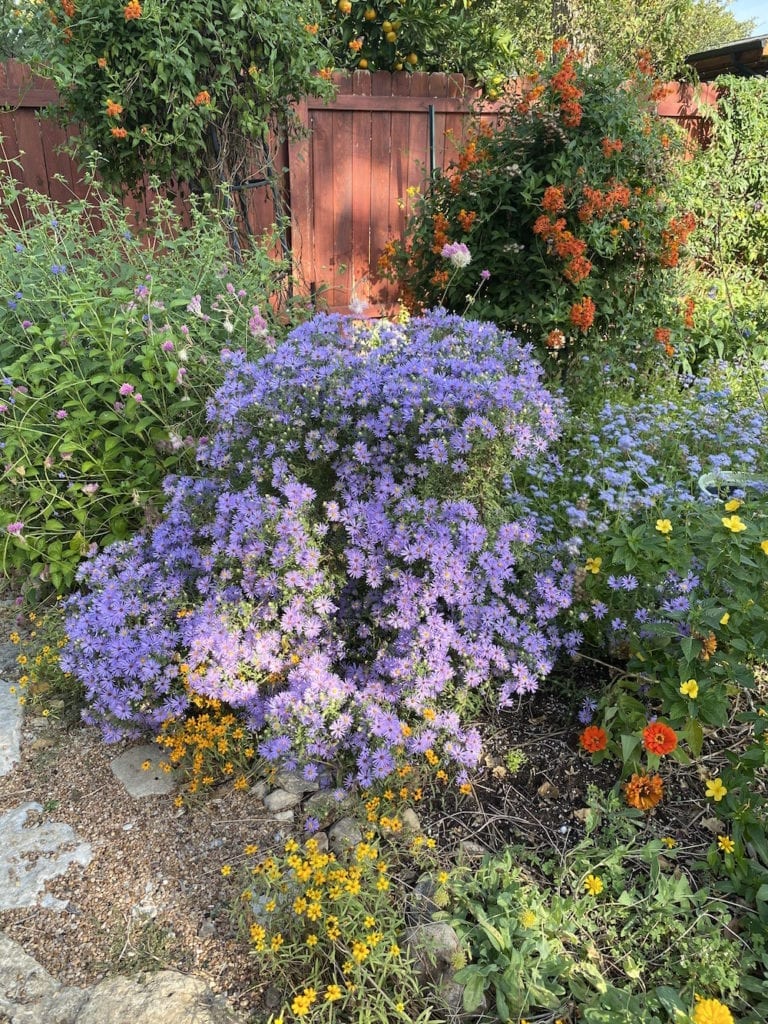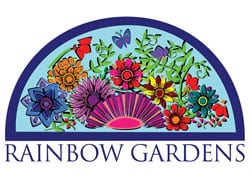As summer fades and most blooms begin to tire, Texas Fall Aster bursts into color, transforming landscapes with clouds of violet-lavender flowers. This tough, Texas-native perennial is a pollinator magnet, a drought-tolerant Texas SuperStar®, and a must-have for every San Antonio gardener looking to extend their garden’s bloom season into autumn.
What Is Texas Fall Aster?
Texas Fall Aster (Symphyotrichum oblongifolium)—sometimes called Fall Aster or Aromatic Aster—is a hardy, mounding perennial native to the central and southern United States. In Texas, it shines brightest in late summer and fall, when hundreds of daisy-like purple blooms cover its compact green mound.
Its Texas SuperStar® designation means it has been rigorously tested and proven to thrive across the state, especially in hot, dry climates like San Antonio. This combination of beauty and toughness makes it one of the best-performing native perennials for local landscapes.

Growing Texas Fall Aster in San Antonio
Light Exposure
In San Antonio, Texas Fall Aster performs best in full sun to light shade. It loves at least 6 hours of direct sunlight daily for the heaviest bloom display. It can tolerate light afternoon shade, especially in hotter areas or reflective spaces near walls and patios.
Soil Requirements
Texas Fall Aster adapts easily to well-draining soils, from sandy loam to the heavier clay common in the Hill Country. It prefers slightly alkaline soil, which is typical of the San Antonio region. To encourage vigorous growth, amend planting areas with compost or organic matter to improve texture and drainage.
Water and Drought Tolerance
Once established, Texas Fall Aster is highly drought tolerant. Water regularly during its first growing season to establish a deep root system, then water sparingly. Overwatering can lead to leggy growth or root rot. This plant is ideal for low-water landscapes and xeriscape designs that conserve precious San Antonio water resources.
Fertilizer Needs
Texas Fall Aster doesn’t need heavy feeding. Apply a slow-release, balanced fertilizer (such as 6-6-6 or 8-8-8) in early spring as new growth emerges. Too much nitrogen encourages leaf growth over blooms, so keep fertilization light.
Growth Habit and Mature Size
In the San Antonio area, Texas Fall Aster grows into a dense, mounded clump about 18 to 24 inches tall and 24 to 36 inches wide. It spreads slowly over time, creating a soft, natural look. After blooming, prune back by one-third to maintain shape and encourage fresh foliage.
Evergreen Qualities
In mild South Texas winters, Texas Fall Aster often remains evergreen, retaining much of its foliage year-round. Even when it does die back in colder spells, it quickly rebounds with lush growth in spring.
Texas Fall Aster: Vibrant Color and Natural Texture
When in full bloom, Texas Fall Aster creates a spectacular show of lavender-purple flowers with golden-yellow centers. Each plant becomes a dome of color, lighting up the fall garden when few other perennials are in bloom.
Its fine-textured, aromatic foliage adds interest even when not flowering, and the tidy mound shape fits beautifully into both formal and naturalistic designs.
Texas Fall Aster pairs beautifully with native ornamental grasses, Blackfoot Daisy, or Gregg’s Mistflower, creating dynamic, pollinator-friendly plantings that reflect the charm of the Texas Hill Country.

Pollinator-Friendly Powerhouse
Few plants attract fall pollinators like Texas Fall Aster. Its late-season blooms provide vital nectar for monarch butterflies, native bees, and other beneficial insects preparing for migration or overwintering.
If you want to support pollinators in San Antonio, this plant is essential. It acts as both a nectar source and habitat, fitting seamlessly into wildlife-friendly or native gardens.
These gorgeous perennials are about to burst into bloom, and the butterflies will be swarming. With the pollinator migration upon us, you don’t want to miss out on one of their favorite nectar sources!
~The Happy Gardener, Lisa Mulroy

